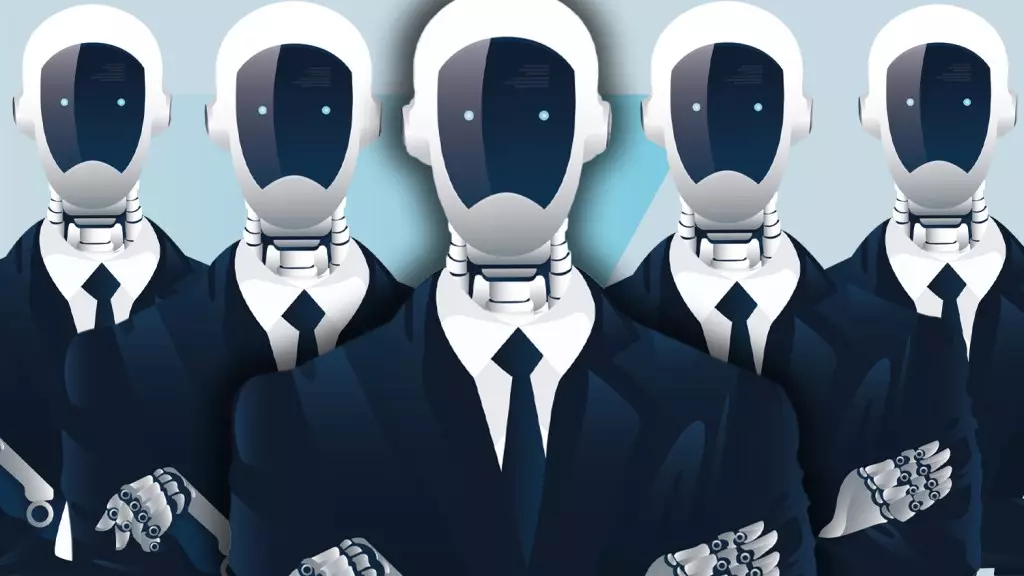As the technological landscape evolves, the rise of artificial intelligence (AI) has sparked fundamental questions regarding the rights of creators, particularly those in the performing arts. The recent pronouncement from Equity, the UK actors’ union, underlines a mounting anxiety among performers about how their intellectual property is being leveraged without consent or adequate compensation. Equity’s bold stance—threatening legal action against major media giants like BBC and Disney—highlights the urgency of addressing these challenges head-on. The implications of AI’s encroachment into the realm of creative work necessitate a reevaluation of existing frameworks aimed at protecting performers’ rights.
One of the central themes in Equity’s letter is the notion of “industrial scale theft of our members’ data.” As AI developers increasingly seek access to rights-protected content for their training models, performers find themselves in a precarious position. The union articulates the concern that content owners are exploiting this demand through licensing arrangements that sidestep performers’ rights altogether. The dangers posed by such practices are manifold; they not only threaten creative ownership but also blur the lines of ethical content creation.
Performers often invest years honing their craft, yet the rise of AI technology risks undermining their contributions by allowing machines to replicate their performances without acknowledging or compensating the original artists. The open letter emphasizes the necessity for an “urgent conversation” regarding the relationship between AI development and performers’ property rights—a call to action that resonates throughout various sectors, including broadcasting and video games.
Equity’s letter delves into the current legislative landscape, pointing out the inadequacies in protections for performers under the Copyright, Designs and Patent Act 1988 and the UK General Data Protection Regulation (GDPR). As digital landscapes evolve, these frameworks must also adapt to ensure that performers are not left vulnerable in the wake of technological advancement. Equity stresses that any new exploitation of rights-protected content must be approached with informed consent, transparency, and appropriate compensation.
The UK government’s recent AI Opportunities Action Plan showcases progress, proposing a copyright-cleared British media asset training data set as part of its 50 recommendations for bolstering the UK’s AI sector. While such initiatives signal forward-thinking, they also underscore the necessity for clearer regulations that protect performers’ interests. The ambiguity surrounding who owns what in the digital space only adds complexity to an already intricate web of legal and ethical concerns.
Equity has indicated their willingness to engage in constructive dialogue with various stakeholders, calling for a collaborative approach that involves broadcasters, streaming platforms, and independent producers alike. Their proactive stance highlights the importance of involving all parties in discussions about the future of AI in creative industries. There is no doubt that AI can enhance various processes within media production, but it must not come at the expense of the individual artists whose work fuels these technological advancements.
As Equity continues negotiations with Pact—a process reported to extend into 2025—there remains a glimmer of hope for a balanced resolution that respects both innovation and the creative rights of performers. Drawing inspiration from the ongoing SAG-AFTRA negotiations in the U.S., Equity seeks a tailored framework that addresses the varying impacts of generative AI on different categories of performers, including dubbing actors and supporting artists.
The conversations sparked by Equity’s concerns signify a pivotal moment in the intersection of technology and the arts. The stakes are high; the ethical considerations surrounding AI can shape the future of creative industries for years to come. As stakeholders in media production come together, the need for frameworks that protect artists’ rights while embracing the potential of AI becomes increasingly evident. Only through open communication and transparent practices can a balanced and equitable approach be established.


Leave a Reply